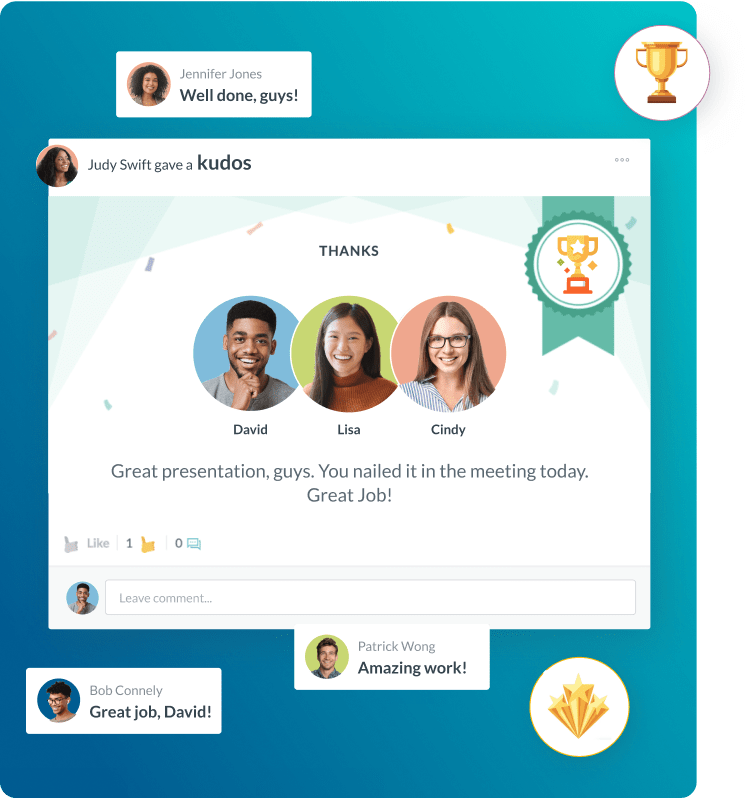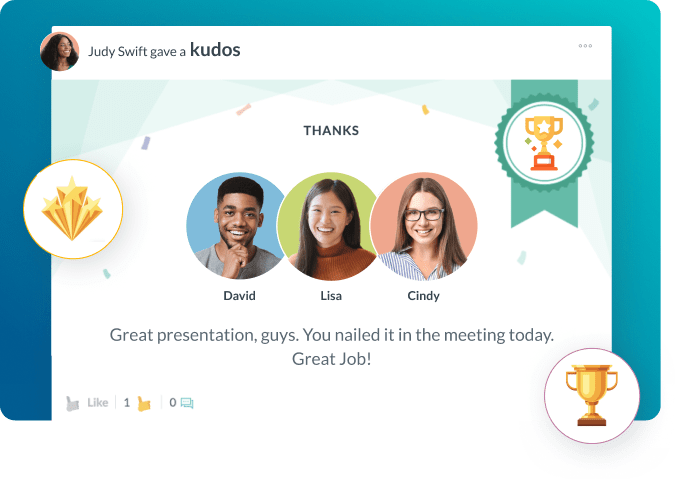Employee Milestones
- Key Points for Recognizing Employee Achievements
- Comparing Milestone Types and Business Value
- Best Practices for Successful Employee Milestone Recognition
- Pitfalls to Avoid in Employee Milestone Programs
- Industry Applications for Strategic Milestone Recognition
- Implementation Plan: A Step-by-Step Guide
- Future Outlook and Trends in Employee Milestone Recognition
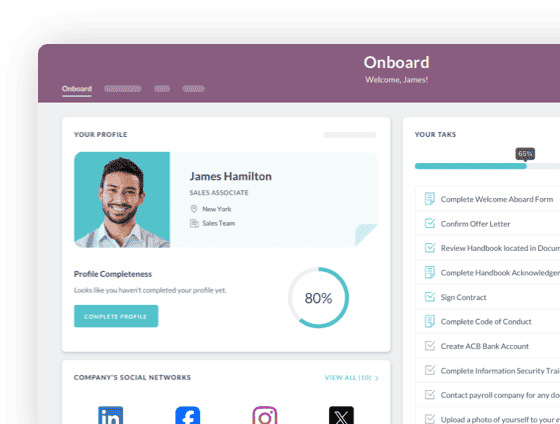
 Cut onboarding time
by 60%—here's the
Ultimate Checklist
that helped do it.
Cut onboarding time
by 60%—here's the
Ultimate Checklist
that helped do it.
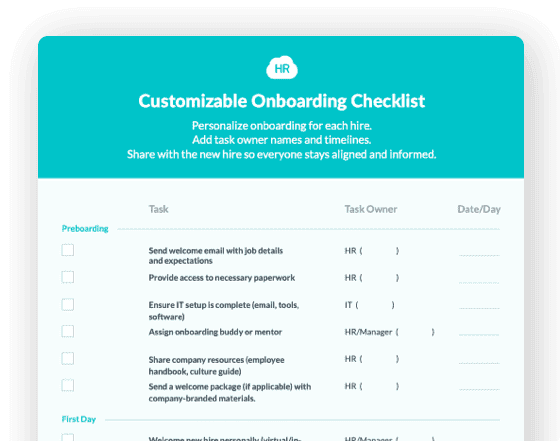
Employee Milestones are key, clear events in an employee's career at a company. They show major achievements, new roles, and work anniversaries. They are much more than the old 1-, 5-, or 10-year service awards.
Recognizing these milestones in a smart way turns a simple HR task into a powerful business tool. It is a basic practice for keeping good talent today. It is also a vital part of effective employee recognition programs. For leaders, a strong milestone strategy is important. It helps lift employee spirit, build a better company culture, and drive business success for a long time.
A complete milestone program honors more than just time spent at the company. It also honors completed projects, professional growth, promotions, and team wins. These public and private thanks create a constant feeling of appreciation. This feeling shows the company values the employee's work and loyalty. This directly helps business measures like high productivity, better quality of work, and minimizing employee turnover. Businesses can fix cultural weak spots and become a top choice for job seekers when they make these key career achievements a priority.
Key Points for Recognizing Employee Achievements
Smartly recognizing employee milestones gives real benefits. These benefits go far beyond a simple plaque or thank you note. Leaders should see this as investing in their people, not just an expense. This view is key to securing growth and stability in the future.
Drives Performance:
Acknowledging wins, such as a large project launch or a new certification, encourages good behaviors. This steady positive feedback is vital for keeping performance high.
Enhances Retention:
Employees who feel their growth is tracked and celebrated will look for new jobs less often. Thoughtful recognition is a major part of keeping your best people. You can track this performance using strategic performance management software.
Improves Engagement:
Smart milestone recognition is a powerful way to boost employee engagement. It shows the company values the person's work. This makes employees want to put more effort and passion into their jobs.
Creates a Positive Culture:
When recognition is fair, open, and happens all the time, it helps build a strong and helpful work environment. This base of support is key for improving company culture across all teams.
Provides Data for HR:
Tracking when and why employees get recognized gives helpful information for strategic performance plans and choosing future leaders. This data helps find employees with high potential and shows if development programs are working.
Comparing Milestone Types and Business Value
To map the employee journey well, you must tell the different milestone types apart. Each type has a unique purpose in effective employee recognition. It also brings a specific type of business value. Leaders can use resources better and match the recognition to the achievement when they understand these differences.
|
Milestone Type |
Definition and Examples |
Primary Business Value |
|
Tenure/Service |
Work anniversaries (1 year, 5 years, etc.). Focus is on loyalty and commitment. |
Retention and Stability: Rewards loyalty. It shows staff and outside candidates that the work environment is stable. It strengthens commitment. |
|
Performance/Achievement |
Finishing a project, hitting a major sales goal, earning a patent, or solving a key business problem. |
Productivity and Innovation: It encourages goal-focused actions. It motivates teams to hit certain targets and celebrates new ideas. |
|
Development/Growth |
Finishing a professional degree, getting an important industry certification, or moving to a new job inside the company. |
Talent Pipeline and Skilling: It pushes for constant learning. It proves that money spent on training is worth it. It makes sure employee skills stay up-to-date. |
|
Cultural/Behavioral |
Always showing company values, excellent teamwork, or mentorship of new staff. |
Cultural Alignment and Morale: It sets the right behaviors in stone. It helps create a positive workplace. It encourages leadership from everyone. |
Best Practices for Successful Employee Milestone Recognition
To get the most out of recognizing employee achievements, leaders must make milestone programs a core part of how the company works. These practices make sure the program is useful, can grow, and meets business goals.
Make the Program Formal and Set a Budget:
Do not treat recognition like a last-minute idea. Write clear rules. Set exact standards for different milestones. Create a dedicated, untouchable budget. This ensures the program is fair and steady across the whole company. You can use HR technology to track and manage your budget and events better.
Match the Recognition to the Person:
Being consistent is key, but the reward should feel personal. For example, a new parent may prefer flexible work hours over a formal dinner. Use employee feedback and data to learn what truly motivates each person. This ensures the reward is truly appreciated.
Focus on the "Moment" of Achievement:
Recognition should be fast and closely tied to the accomplishment. If you wait six months to honor a big project, the motivation wears off. The positive impact of continuous feedback and recognition is much higher when the thanks are immediate, according to research from Gallup.
Include Leaders and Peers:
Recognition is more powerful when it comes from the top and the sides. Make sure senior leaders personally give out some of the thank-yous. Start a peer-to-peer recognition system to add to the formal programs. This boosts employee engagement and makes recognition a job for the whole company.
Tell the "Why":
When you recognize an achievement, clearly explain how the employee's work helped reach a certain business goal. This ties personal performance to company success. It makes the moment more meaningful and inspires others.
Track and Measure the Impact:
Use metrics to check if your milestone program is successful. This includes asking employees if they feel the program is fair and valuable. Also, match recognition data with retention rates and performance scores. This lets you always improve the program. It also shows the large financial returns of retaining top talent.
Pitfalls to Avoid in Employee Milestone Programs
Even good recognition plans can fail if you do not fix common mistakes. Avoiding these errors is just as important as using best practices. It helps keep the program strong and effective.
Inconsistency and Bias:
Recognizing achievements randomly or seeming to favor some teams or people destroys trust and can hurt morale. The rules for every milestone must be clear and fair. Apply them equally across the company to keep things honest.
The "One-Size-Fits-All" Reward Trap:
Giving everyone the same generic gift card or plaque for very different accomplishments shows a lack of care. This "transactional" approach makes employees feel like a number. It cancels out the good intent. Recognition must match the achievement and feel personal to the employee.
Lack of Senior Leader Visibility:
If only direct managers or HR handle the recognition, employees may feel it is less important to the company's leaders. When senior executives take part, even for a short time, it makes the employee milestones more important and shows the company's full commitment.
Failure to Recognize "Invisible" Milestones:
Do not forget achievements that do not directly relate to sales or income. These include better internal processes, great customer service, or quiet mentorship. Ignoring these contributions misses key work.
Delaying Recognition:
As noted before, timeliness is key. A thank-you given months after the achievement loses its power. It can feel like an obligation instead of real appreciation. Use automated reminders and an integrated system to streamline HR processes with technology. This ensures quick delivery.
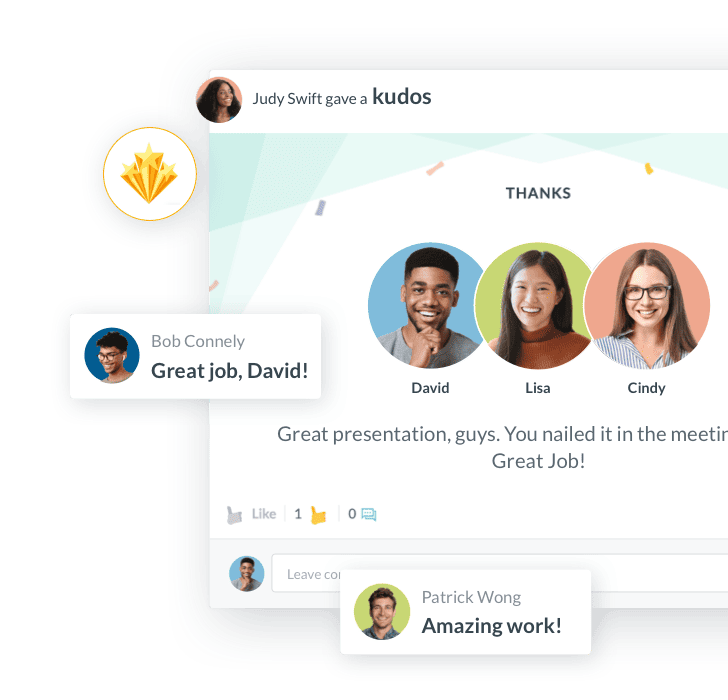
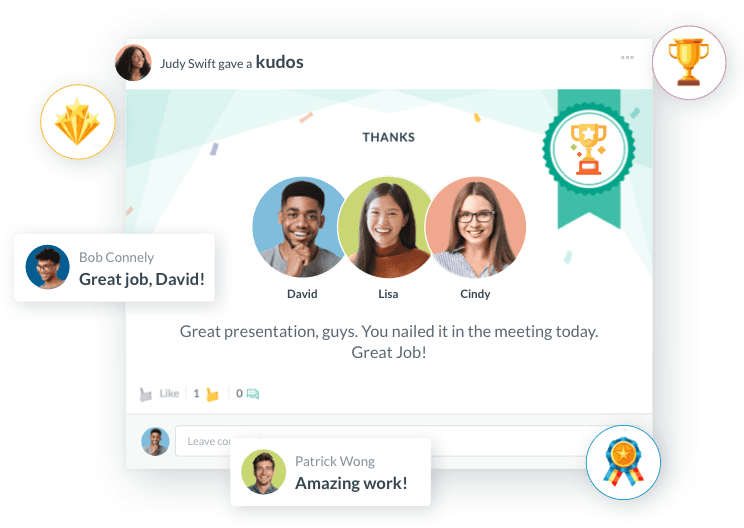
Industry Applications for Strategic Milestone Recognition
A strong strategy for mapping the employee journey changes by industry. But the idea of supporting key achievements stays the same everywhere. These real examples show how smart milestone recognition helps specific business needs.
Technology and Software Development
In the fast-paced tech world, the key is to honor speed and new ideas, not just time spent. Employee milestones often link to how fast products are developed.
Application: Recognizing key career achievements like launching a new software feature, filing a patent, or fixing a critical technical problem.
Value: This plan helps a continuous improvement model (like DevOps). It motivates fast, high-quality development cycles. It also helps engineers and developers feel ownership of their work.
Healthcare and Pharmaceuticals
In these highly regulated fields, milestone recognition focuses on following rules, caring for patients long-term, and continuous professional development (CPD).
Application: Celebrating a nurse's five-year work anniversary for their dedicated patient care. Honoring a research team for getting regulatory approval or publishing an important paper. Praising staff for perfect safety records.
Value: It encourages following strict rules. It rewards the emotional work of care. It supports the vital need for stable, highly skilled staff over time.
Financial Services and Banking
This industry benefits from honoring success with clients, excellent risk management, and employee loyalty in a field with high competition.
Application: Recognizing a financial advisor for hitting a major asset under management (AUM) goal. Celebrating a team for passing a regulatory audit perfectly. Acknowledging work anniversaries that show client trust and historical knowledge.
Value: It promotes ethical behavior. It enforces following compliance standards. It validates the hard-earned customer relationships that bring in long-term revenue.
Implementation Plan: A Step-by-Step Guide
Starting a new employee milestones program, or fixing an old one, requires a clear process. Follow these steps for a smooth change and a lasting effect on your workers.
Step 1: Define Goals and Scope
Set Objectives: Decide your main business goals. Do you want to increase retention in the first two years? Drive sales performance? Or build a specific cultural value?
Get Buy-in: Get senior leaders to agree to the plan. Involve managers from all departments. Explain how the program helps with overall strategic performance management.
Allocate Budget: Set aside a clear budget that can last for the entire program. This includes money for rewards, technology, and communication costs.
Step 2: Identify and Categorize Milestones
Establish Tiers: Create separate groups: tenure, performance, development, and cultural, as shown in the table.
Set Clear Criteria: For each milestone, set clear rules. For example, a "High-Impact Project" milestone might require $X in revenue or Y hours of time saved.
Review Old Data: Look at past recognition and service awards. Find any holes or times the program was inconsistent. Fix these areas.
Step 3: Design the Recognition Methods
Create a Recognition Toolkit: Develop a mix of formal rewards (like bonuses, ceremonies) and informal rewards (like public mentions, extra time off). Remember to match the reward to the employee's preference.
Integrate Technology: Choose a system to streamline HR processes with technology. This system must track milestones, send automatic notices, help with peer-to-peer recognition, and save all recognition data.
Develop Communication Templates: Write clear, high-quality messages for internal and external communication. This ensures the recognition is always celebrated professionally and publicly.
Step 4: Launch and Train
Soft Launch: Try out the program with one small group or department. This helps find and fix any problems before the full company launch.
Manager Training: This is key. Train all managers on the why and how of the program. Give them the skills to deliver real, meaningful, and timely recognition.
Full Company Launch: Announce the program with clear documents. Explain the benefits. Tell employees how they can nominate peers or track their own progress toward key career achievements.
Step 5: Monitor, Gather Feedback, and Iterate
Track Metrics: Look at the data from your HR system often. Match recognition events with retention rates, survey results, and performance reviews.
Ask for Feedback: Use anonymous surveys or group discussions. Ask employees what they value most and where the program is lacking.
Continuous Improvement: Plan to review and update the program every year. This ensures it stays useful, impactful, and aligned with changing business goals. This review cycle is vital for effective employee recognition programs.
Future Outlook and Trends in Employee Milestone Recognition
The future of recognizing employee milestones is moving toward being highly personal, having constant feedback, and using more HR technology. Leaders should expect these trends to keep their programs strong and effective.
The Rise of the "Moment of Matter"
Old work anniversaries will still be important. But they will be joined by a focus on "moments of matter." These are smaller, more frequent, and often performance-based achievements. This shift fits modern work styles that value speed and project success. The focus is on building a culture of continuous recognition. This is better than relying on a few events each year. This not only keeps motivation high but also creates good data for strategic performance management systems.
Technology and Data-Driven Personalization
Advanced HR systems and artificial intelligence (AI) will do more. They will help companies track and personalize recognition for many people. AI tools will look at employee profiles, past rewards, and stated preferences. They will suggest the most meaningful way to celebrate a specific employee milestone. This goes far past generic options. Using data to customize recognition makes sure the reward is not just received, but deeply felt. This strengthens the link between recognition and minimizing employee turnover. Also, using technology to honor positive behavior helps companies fix issues with fairness and bias. This makes their programs more respected and reliable.
Integration with Well-being and Career Growth
Future employee milestone programs will closely connect to employee health and clear paths for career growth. For example, recognizing a major achievement might automatically trigger an invite to a mentorship program or funds for a wellness retreat. It will be more than just a cash bonus. The recognition itself will act as a developmental step. It will formally link a past achievement to a future chance. This full approach is key to growing talent and building a strong base for future business success. By preparing for these trends, business leaders can ensure their investment in recognizing employee achievements remains a powerful way to keep the company healthy for the long term.
Keep Reading
Employee Engagement Intranet Tools: A Practical Buyer's Guide for 2025
"We improved our communication effectiveness by 40% within the first 90 days of
Best Digital HR Solutions for Workforce Engagement in 2025: Complete Buyer's Guide
Modern workforce engagement software isn't just about surveys and recognition. It's about
How HR Cloud Is Shaping the Future of HR in Senior Care
At the 2025 LeadingAge Annual Meeting in Boston, one conversation is taking centerstage —
Ready to streamline your onboarding process?
Book a demo today and see how HR Cloud can help you create an exceptional experience for your new employees.






